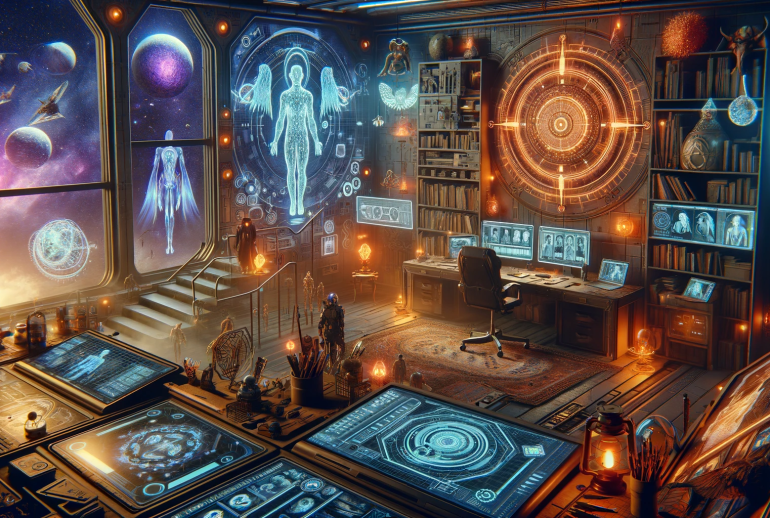Characters are the beating heart of any story, and crafting compelling and three-dimensional characters is an essential skill for every writer. These characters breathe life into your narrative, driving the plot, engaging readers, and leaving a lasting impact. In this article, we’ll explore the art of character development, discussing techniques and exercises to help you create characters that resonate with your readers and stay etched in their minds.
The Importance of Character Development
Before delving into the techniques, let’s understand why character development is vital for storytelling:
-
Reader Engagement: Well-developed characters evoke empathy and make readers care about their journeys, fostering a deeper connection to the story.
-
Conflict and Growth: Complex characters provide the raw material for conflicts, dilemmas, and personal growth arcs that drive the plot.
-
Relatability: Readers relate to characters who exhibit both strengths and flaws, making them feel human and relatable.
-
Memorability: Memorable characters leave a lasting impression and can become iconic figures in literature.
Techniques for Crafting Compelling Characters
Here are key techniques and exercises to master the art of character development:
1. Character Profiles:
- Detailed Backgrounds: Create comprehensive character profiles, including details about their history, beliefs, desires, and fears.
- Backstory Exploration: Delve into your characters’ pasts to understand how their experiences shape their personalities and motivations.
2. Flaws and Strengths:
- Balance: Ensure your characters possess a mix of strengths and flaws, creating relatable and multidimensional individuals.
- Internal and External: Explore both internal (emotional) and external (physical) flaws and strengths.
3. Motivations and Goals:
- Identify Desires: Understand what drives your characters, their goals, and the obstacles standing in their way.
- Conflicting Motivations: Create conflicts by giving characters competing desires or moral dilemmas.
4. Character Arcs:
- Growth and Change: Plan character arcs that involve personal growth, change, or transformation over the course of the story.
- Positive and Negative Arcs: Characters can experience positive (growth) or negative (regression) arcs, depending on the story.
5. Dialogue and Voice:
- Distinct Speech: Develop unique voices for each character, reflecting their personalities, backgrounds, and quirks.
- Subtext and Inner Thoughts: Use dialogue to reveal characters’ inner thoughts, desires, and conflicts.
6. Show, Don’t Tell:
- Actions and Reactions: Reveal character traits through their actions, reactions, and decisions.
- Symbolism: Use symbolic elements within the narrative to mirror character development.
7. Emotional Range:
- Emotionally Complex: Characters should experience a range of emotions, allowing readers to connect with their humanity.
- Physical and Emotional Responses: Describe both physical and emotional reactions to situations.
8. Conflict and Relationships:
- Conflict Sources: Develop interpersonal conflicts and relationships that challenge your characters and drive the narrative.
- Chemistry: Create authentic chemistry between characters, whether it’s romantic, familial, or antagonistic.
9. Character Exercises:
- Interviews: Conduct character interviews where you ask your characters questions and let them respond in their voices.
- Writing from Their Perspective: Write scenes or monologues from your character’s perspective to gain insight into their thoughts and emotions.
- Flashbacks: Explore significant moments from your character’s past through flashbacks or memory exercises.
10. Beta Reader Feedback:
- Reader Perspective: Share your work with beta readers and seek feedback on how well they connect with and understand your characters.
Case Studies: Memorable Characters in Literature
Explore these examples of memorable characters in literature and what makes them stand out:
-
Atticus Finch in “To Kill a Mockingbird” by Harper Lee:
- Technique: Atticus is a morally upright and complex character, providing a strong moral compass while facing personal challenges.
-
Holden Caulfield in “The Catcher in the Rye” by J.D. Salinger:
- Technique: Holden’s authentic teenage voice and struggles with identity resonate with readers, making him a relatable and enduring character.
-
Lisbeth Salander in “The Girl with the Dragon Tattoo” by Stieg Larsson:
- Technique: Lisbeth is a complex, enigmatic character with a traumatic past, and her strength, vulnerability, and intelligence make her unforgettable.
Conclusion: Breathe Life into Your Characters
The art of character development is a nuanced and rewarding process that elevates your storytelling. By applying techniques such as character profiles, balanced strengths and flaws, compelling motivations, and dynamic character arcs, you can create characters that resonate deeply with your readers. As you breathe life into your characters, they, in turn, breathe life into your story, taking it to new heights of engagement and impact. So, embark on the journey of crafting three-dimensional characters and watch as they come alive on the pages of your narrative.



